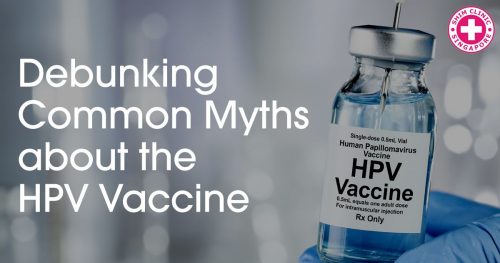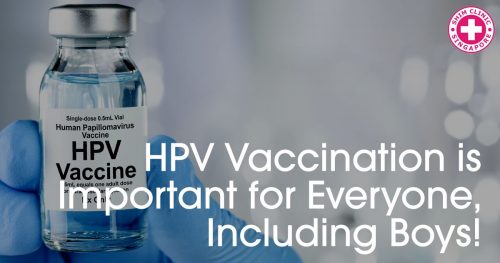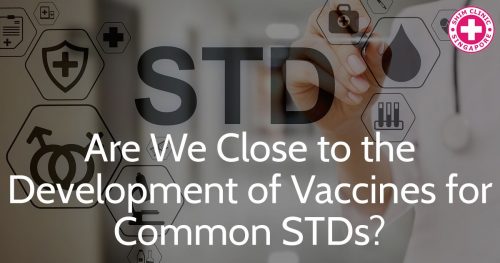Vaccines like Gardasil are readily available and they offer reliable protection against multiple types of cancer plus genital warts. Since these vaccines are relatively new, however, people have many questions about them. Misconceptions spread around and prevent many from getting vaccinated. Debunking these common myths is essential to maximise vaccination efforts and protect both men and women against an array of potential health risks.
Continue readingPost Category → #STD
HPV Vaccination Is Important for Everyone, Including Boys!
The HPV vaccine has proven time and time again to be safe, effective and well-tolerated. It protects against genital warts, cervical cancer and several other types of cancer that have been linked to HPV exposure. While the vaccine is mostly being promoted as a solution for women, the importance of getting boys vaccinated high. The prominence of HPV-related cancers among men is high and vaccines can offer reliable protection.
Continue readingSyphilis Infection Rates Increase Across the Globe
Numerous countries and regions have reported an increase in the rate of new syphilis diagnoses. The increase has been rapid in Japan, various Canadian provinces and European Union (EU) countries. According to researchers, the reasons behind the increase in the rate of STIs are complex. There’s a tendency for reduced barrier contraception use. In addition, new syphilis diagnoses affect a disproportionately high number of men who have sex with men.
Continue readingThe World Sees Growth in New Syphilis Cases, Are Dating Sites to Blame?
Syphilis infection rates have skyrocketed in many parts of the world, including Asian countries, Europe, the US and Canada.in some instances, the increase in new infections exceeds 187 per cent. Singapore has also noted a growing trend of STI infections over the past few years. According to researchers, dating apps and internet-based technologies contribute to the problem. They make casual encounters easier and much more accessible, which leads to the effortless spread of diseases like syphilis, chlamydia and gonorrhoea.
Continue readingNumber of Syphilis Diagnoses in Thailand Goes Up: What Are the Dangers?
The number of new syphilis infections in Thailand has been on the rise, especially among younger individuals. Authorities worry about the trend because it indicates increased prevalence of unsafe sexual practices. The rate of infections among sex workers is also relatively high, which jeopardises the health of tourists and visitors to the country. While syphilis is relatively easy to treat, it can remain hidden for a long period of time. The infection increases the risk of contracting other STDs, as well.
Continue readingWHO: One Million STD New Diagnoses Every Single Day
Globally, more than one million new STI infections occur on a daily basis, the World Health Organization reports. Four conditions are responsible for the bulk of these new diagnoses – gonorrhoea, chlamydia, trichomoniasis and syphilis. Researchers have also identified a troublesome new trend. There have been multiple super-gonorrhoea infections. These involve a bacterial strain that has evolved to become antibiotic-resistant. As a result, such infections become nearly impossible to treat.
Continue readingAre We Close to the Development of Vaccines for Common STDs?
The US National Institute of Allergy and Infectious Diseases will grant massive sums for the research and development of STD vaccines over the coming five years. The scientific community will focus on the three most common STIs in the world – chlamydia, gonorrhoea and syphilis. While information about STIs is readily available, the incidence of such infections has increased rapidly. Because the diseases pose a serious public health risk in countries across the world, all efforts will be concentrated on their prevention and eventual eradication.
Continue readingThe Truth about Teens and STIs in Singapore
In 2017, STI infection rates among teenagers in Singapore started going up for the first time in years. Research suggests that several factors contribute to risky behaviour among adolescents. While young people are aware of barrier contraception and its use, they lack the confidence to utilise condoms properly. Peer pressure and misunderstandings about the nature of STIs and their spread also contribute to problems. Openness on behalf of parents and educators are two of the key essentials for de-stigmatising sex and giving young individuals the information they need to engage responsibly with their peers.
Continue readingTeamwork for Sexual Health
More women are going for STD testing than men. While this is good news for the women, there is need for joint effort between men and women to fight STDs otherwise both genders will remain at high risk of infection.
Continue readingAre Home-Based STD Testing Options the Answer to Getting More People Screened?
A recent study shows that people are more likely to get STD testing if given the option to send their blood/urine samples via mail instead of walking into an STD clinic.
Continue reading








